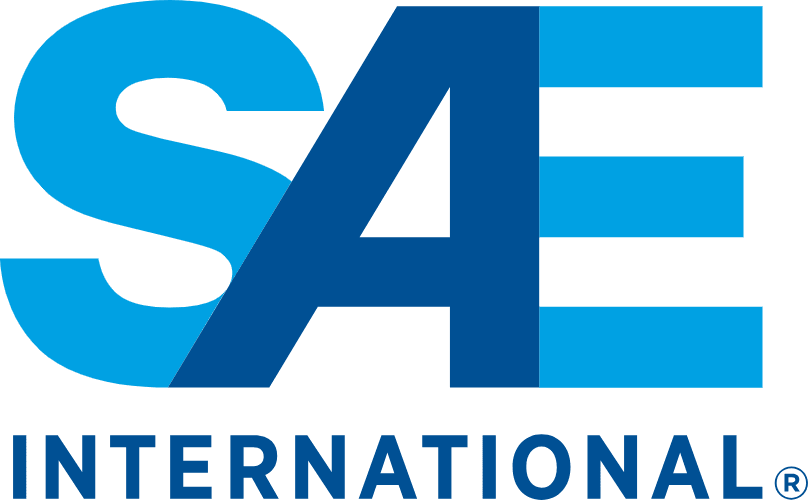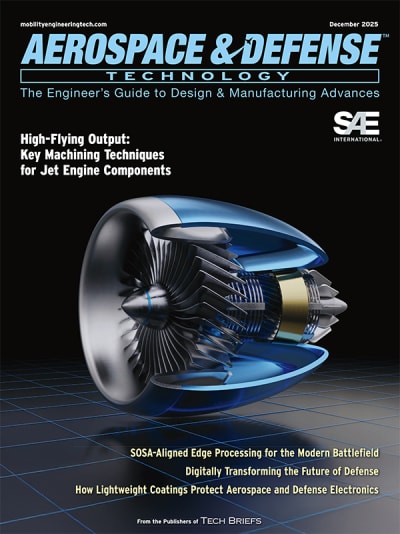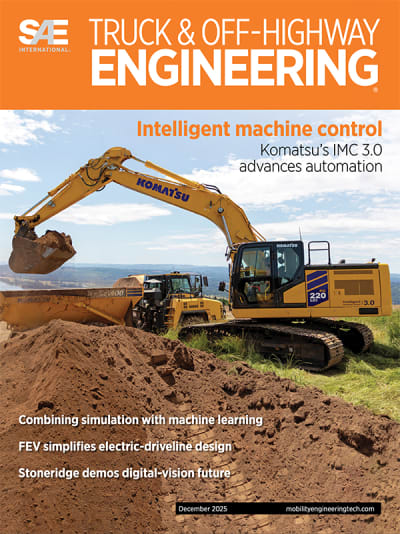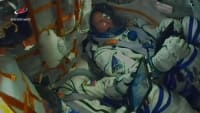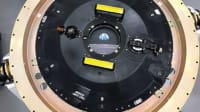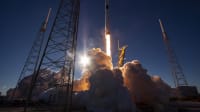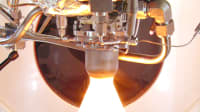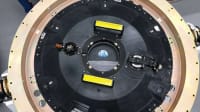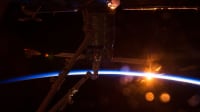Final Orion Capsule Parachute System Test Successful
With the last element of the spacecraft validated, an unmanned Orion mission will take place in June 2020.

A team of engineers from NASA and Dallas-based Jacobs Engineering Group Inc. successfully completed the eighth and final test of the Orion spacecraft Capsule Parachute Assembly System at the U.S. Army Yuma Proving Ground in Yuma, Ariz. The reentry system is critical to safely returning Orion astronauts to Earth from planned missions to the moon.

During the final qualification trial an Orion test capsule was dropped from a Boeing C-17 Globemaster III military transport aircraft at an altitude of 35,000 feet to verify the reentry system.
The aptly named “Assembly System” is an assortment of 11 parachutes, cannon-like mortars, and pyrotechnic devices that deploy sequentially slow the Orion capsule's descent to Earth – from 325 miles per hour (mph) to 17 mph.
Although this system is pretty fancy, the Orion’s aeroshell does most of the heavy-lifting, reducing the capsule’s initial entry speed by about 19,675 miles per hour as it enters Earth’s atmosphere. Check out our article on NASA’s new expanding aeroshell design.
The breakdown

At 26,500 feet and 325 mph, three seven-foot-diameter Forward Bay Cover (FBC) parachutes deploy in conjunction with pyrotechnic thrusters to launch the FBC off the top of the capsule. One of the other interesting challenges faced by parachute developers involves the harsh, unforgiving conditions of outer space. Temperatures range from plus 270 degrees in the sun and minus 270 degrees in the shade. The FBC protects the drogue, pilot, and main Orion parachutes from the heat generated during reentry. While the rest of Orion’s parachutes are made from a Kevlar/Nylon hybrid material, the FBC parachutes are made entirely out of Kevlar for added heat resistance.
As the FBC lifts off, two 23-foot-diameter Kevlar/Nylon drogue parachutes deploy at 25,000 feet to decelerate the capsule to 130 mph and orient it, so the main parachutes can operate effectively. Five chutes gone. Six to go. So, the main parachutes get their own parachutes, which is fun – but also critically important. Three 11-foot pilot parachutes deploy at 9,500 feet and then help lift the 116-foot-diameter main parachutes at approximately 265 feet. From there, the Orion capsule decelerates to 17 mph, and during an actual Orion mission, the capsule will make a water landing. From FBC deployment to landing, the entire process takes under three minutes. To get to that three minutes, it took more than 12 years to provide design, development, and test for various circumstances, including normal landing sequences, several failure scenarios and a variety of potential aerodynamic conditions to ensure the safe return of astronauts from deep space missions. Nearly every parachute failure mode imaginable was replicated and studied during these years.
Next steps
Astronaut Randy Bresnick, a 14-year NASA veteran, was among those who witnessed the dramatic test. Earlier this year he returned from a 139 day stay on the orbiting International Space Station where he served as crew commander. He explained that NASA chose to conduct the parachute tests at Yuma because of the drop zone's great expanse, as well as the high-altitude restricted airspace above it.
"This is one of the few places in the United States NASA can do this," says Bresnick.
He believes the past 12 years of testing was critically important.
"We can conduct a great future exploratory mission in space, but if the parachutes don't work on earth re-entry, it was all for naught," he said. An unmanned Orion mission will take place in June 2020 and the first manned mission two years later. The Orion will use the largest and most powerful rocket engines ever developed,” continues Bresnick.
"Orion is our new human exploration spacecraft, and this is a spacecraft that will take people farther in space than we've ever gone before," says Orion program manager Mark Kirasich. Orion will launch on a NASA Space Launch System (SLS) launch vehicle.
This Friday post is part of our “Composite coverage: real lightweight stuff” series and a departure from SAE International’s traditional reporting approach. Let us know if you like our fun, conversational, and most likely irreverent coverage of legitimate news and notable events.
William Kucinski is content editor at SAE International, Aerospace Products Group in Warrendale, Pa. Previously, he worked as a writer at the NASA Safety Center in Cleveland, Ohio and was responsible for writing the agency’s System Failure Case Studies. His interests include 'literally anything that has to do with space,' past and present military aircraft, and propulsion technology. And also sportscars.
Transcript
00:00:02 [Music] good morning I'm Katherine Hamilton from NASA's Office of Communications we are here at the US Army proving ground in Yuma Arizona and for the final test of the Orion parachute system we've got plenty of room out here in the expanse of the Arizona desert to see the parachutes 11 parachutes in this system in action and these tests will help us
00:00:34 ensure that we can bring astronauts home safely when we send crews out to the moon and beyond but an hour ago the c-17 took off carrying the Orion for today's test it flew up about six and a half miles overhead and we've seen it pass everything is tracking towards a drop test at about eight o'clock this morning here with us is Marc curious which he is
00:01:00 the Orion program manager and he is responsible for the design development testing and manufacturing of the Orion spacecraft thank you for joining us and congrats on on getting to the final test well thank you Katherine please tell us what we're gonna see today and why it's important all right well I think most of you know that I Ryan is our new human exploration spacecraft and this is the
00:01:23 spacecraft that is going to take people farther into space than we've ever gone before and our missions will last for several weeks long and during that time the crew will travel hundreds of thousands of miles into space and back in some of the harshest environments that people have ever been exposed to extreme thermal extreme radiation and so on as incredible as all that maybe one
00:01:48 of the most challenging parts of the mission is what we call the East entry descent and landing phase when we slow the spacecraft down and we have to do it just right so when the capsule touches down into the ocean it's going slowly not to protect the crew and that's what brings us here to the Yuma Proving Ground the system that does this for us is our Orion parachute system we call it
00:02:10 the C pass system and that's what we're going to be doing here today we're going to be conducting our final test of this system here on the ground before we test it in coming back from space this is a big deal can you tell us what the team is through to get to this point oh yes we've had an incredibly talented engineering team at the design of the
00:02:29 system for over a decade over ten years and over this period they've actually conducted well over 40 drop tests and and throughout this period they've made observations they look at the parachutes every time they land and from all these observations they've made numerous countless improvements to the design to how we manufacture the parachutes to how we install the parachutes in the
00:02:51 spacecraft to make sure all the lines are laid out exactly right so as the parachutes are pulled out nothing gets caught up and the teams done a fantastic job this last series of tests the qualification tests what we do is we we push the parachute system to all of the corners of the operational box where we expect it to operate and we intentionally induce failures we
00:03:14 intentionally say and today we're not going to deploy a particular parachute to validate the system works exactly as it is supposed to honor the most extreme environmental conditions and with system failures thanks mark now this is the only system on our Ryan that has to assemble itself midair which makes it a particularly challenging job for the engineers that have to design and
00:03:36 develop it let's take a look at some of the preparation that earlier this week including loading the capsule and the parachutes into the airplane and making sure that everything is rigged this work is all in preparation for the first crewed mission that will send astronauts around the moon and beyond launching on the Space Launch System rocket we already have the parachutes
00:04:29 for the first uncrewed mission packed into Orion and ready to go for the first flight next with us we have astronaut Randy Bresnik Randy thanks for joining us out here today in this beautiful day thank you Mark thank you very high Randy thank you for joining us good morning can you tell us what it's like to watch a test like this knowing that your fellow astronauts
00:04:54 or you could possibly be on one of the Orion flights in the future I know that I internally all be my fellow astronauts and hopefully future astronauts are very excited about this test because it is that culmination of this decade-long of testing of such a critical system the fact that it's the final test that we have developed the system you know reduced weight increased safety and we
00:05:16 are you know getting the point where after today everything goes according to plan we're ready for flight that is just astounding and certainly when I say critical system you know a crew will have survived the launch the passage through the Van Allen radiation belts three days 250,000 miles to go around the moon and three days to 50,000 miles to come back into the Earth's atmosphere
00:05:34 Mach 32 they survived all that the one thing they're looking for is that tug or the parachutes when they come out and then they know that they are safely gonna be able to land back on earth after that mission so we are very excited that the today's test is the final one and qualify Orion for flight great so what are you looking forward to seeing in today's test I'm looking
00:05:53 forward to counting the number 11 that's the number of parachutes are going to come out on the different series of the sequences of the drop and I also look forward to seeing the point where I'm told from the testers that when it comes out of the c-17 it has a whole system and a pallet that Orion's riding on well the Ryan then departs from that pallet and all the parachutes are off and it
00:06:14 falls for 12 seconds before the Orion system we're actually testing the 11 parachutes starts operating so I'm looking to see if all these people who know this test and this system are holding their breath during those 12 seconds we get a collective you know gasp of relief when the forward Bay cover 3 parachutes start initiating the sequence great so 11
00:06:32 parachutes in 12 seconds we'll be counting with you alright alright thanks we'll let you go watch the test now alright thank you thank you alright we're a few minutes away and I believe the c-17 is about ready to drop the capsule from its cargo bay up next we have jarred dom and he's here to walk us through the test and give us the play by play as the parachute as the parachutes
00:07:00 unfurl and he's also gonna answer a couple questions for us from folks online if you are watching online please use the hashtag ask NASA to submit your questions alright so what do we expect to see a few minutes from now okay so the the main point of this test is to see how the 11 Oh Ryan parachutes perform but in order to get to those 11 parachutes we have over 10 support
00:07:24 parachutes to get us to the test point so not only do we see those 11 but another 10 getting us there so many win total 21 total so the first thing you're gonna see is our tow shoot so that tow shoot comes out and it'll be attached to the aircraft for a good 10 seconds before it pulls out our to extraction parachutes those two extraction parachutes are about 28 feet in diameter
00:07:42 and their job is to pull the test vehicle on the pallet out of the aircraft as the pod is getting extracted from the aircraft it'll pitch down the capsule will release from the pallet and will deploy to programmer parachutes now these two programmer parachutes will get us set up to the right test point to begin our free fall that Randy described well
00:08:03 freefall for about 12 seconds to gather up that speed to get to a high what we call dynamic pressure to really test the parachutes on the forward Bay cover that starts the real test now our three for Bay cover parachutes will be mortared out of the cover followed by two drogue parachutes three pilots and three mains so I'll give you the play-by-play as everything's coming out sounds great and
00:08:22 what specifically are you testing on this drop and how does it help certify the parachutes to carry humans excellent question so this is the final qualification drop and this is a full system so we're testing all of our parachutes as Randy described we test various failure scenarios where sometimes we don't deploy an F vcp or we don't deploy
00:08:42 a main this will have all 11 parachutes and we're looking for an orderly deployment of those parachutes meaning the components come out when we expect them to come out we'll also look at the shoots after we cover them so the the test doesn't end after touchdown we'll recover the parachutes inspect all 11 look for any damages that are unexpected we do expect some damage
00:09:02 landing out here in the desert we got some prickly bushes but we are looking for any flight damage that might be of concern all right now we're gonna take a couple questions from folks watching on NASA TV again if you'd like to submit your question please use the hashtag ask NASA alright let's see what we've got here under normal conditions what is the
00:09:26 deployment altitude for each parachute type excellent question so a Ryan it reactors the atmosphere at about 17,500 miles an hour and uses the heat shield basically the drag on the blunt body of the spacecraft to slow down to about 350 miles per hour at about 25,000 feet at about 25,000 feet we begin the sequence of deploying the forward Bay cover parachutes to release the cover followed
00:09:49 by the drogue parachutes immediately after we'll ride those drogue parachutes down to about 6,000 feet above the Pacific Ocean and at 6,000 feet cut away those drug parachutes and immediately deploy our pilot parachutes which pull out our mains which take us down to zero feet okay and what materials are used for the chutes excellent questions we'll use a
00:10:07 combination of materials mostly Kevlar and nylon so everybody's heard of Kevlar kind of using bulletproof vests it's very tenacious very strong for a relatively lightweight we use that Kevlar for our load-bearing members we call them our radials our suspension lines our risers and then the drag producing members we use materials like nylon which are very lightweight very
00:10:26 thin you can actually see through the broad cloth on our orange and white Mane's and those produce the drag on the gets transferred down to the the spacecraft alright and and how much has technology for parachutes changed over the years excellent question it's changed quite a bit a lot in the material properties Apollo use steel risers which are very heavy very bulky
00:10:46 hard to pack into the spacecraft we've been able to transition to Kevlar risers now that we have Kevlar available so that saves weight it makes the packing the integration a lot easier we also have a lot better computer simulation techniques to help us both here out on the drop zone and to simulate what's going to happen with the actual spacecraft so that we can get to the
00:11:04 final design solution with fewer drop tests alright and how heavy is the Orion crew capsule that it that the parachutes are bringing down Oh Ryan's about 21,000 pounds so that's a lot of metal a lot of systems in there including our humans and the humans are the most important part looks like we got about a minute until we have our extraction alright do you think we'll be able to spot the
00:11:31 plane yes so we've got some folks helping us they'll be coming in over here from the east right about where the Sun is so careful not to look directly into it alright let's see if we can get a shot on the plane all right I can actually hear one of the planes yep that's actually one of our support helicopters so we have various aircraft at different altitudes video
00:12:32 and imagery is very important for us on these tests so we have aircraft staged at various altitudes to get the the right sequence of video and photos you can see we have one chase aircraft there we got okay there's our tow chute so our tow chute is out it's held on anchored to the aircraft right now in a moment the crew will release and it will pull out our to extraction chutes and there
00:12:56 are two extraction chutes about to pull out the pallet there's the pallet with separation on the PTV right there now we have static line deployed to programmers now those two programmers will stabilize the vehicle and get us to the right altitude attitude and velocity for us to begin the test the test will begin with severing those programmers for that 12 second freefall now the vehicle is
00:13:21 unstable at these speeds so we have software on board that will monitor the rates and the attitudes of the vehicle to make sure that we don't tumble forward we don't want to tumble the vehicle that would be bad for our drugs to be deployed at the apex forward so our software will monitor the L there's our freefall so if you want you can count to 12
00:13:43 looks pretty stable that's looking great you will soon see the two drugs excuse me three forward Bay cover x' there they go they lift off the cover the cover separated to border deployed drugs you can see lots of debris in the air those are the lids the bags other equipment so now we're riding these two drugs they are reefed that means that we have a line wrapped around the skirt of
00:14:09 the parachute constricting the diameter of the chutes to modulate our drag area to reduce our loads and to kind of help with an orderly inflation so now we're gonna ride these drugs down drugs down to as low as we possibly can the actual Orion vehicle with our astronauts in it will descend to the ocean which is at 0 feet mean sea level here you
00:14:46 there's the three pilots three mains now these will inflate through reefing stages similar to the drugs it's more pronounced on these mains so you can see a light bulb shape there in the three mains this is looking really good so far now we're into the second stage they're a little bigger and if you listen closely you can hear those mains inflating and there we go to the full
00:15:06 open beautiful shot right there three main spread out you can hear the crowd in the back cheering we're not quite done yet there's still a lot of stuff in the air but here you can see the three mains bouncing in and out that's completely expected you can see there's holes in the sides of the parachutes we put those there they're supposed to be there we
00:15:33 call that geometric porosity and that does reduce the drag of the parachutes but it does increase the stability so the increased stability makes those fly outs smaller than they normally would be which means that on average our drag is haider so one of these three main parachutes was actually what we call environmentally tested so we put one of these parachutes through the entire
00:15:58 sequence that a flight parachute would see this includes what we call creep testing thermal cycling between high and low temperatures vibration testing and rapid depressurization testing we did all that throughout the this calendar year and then integrated it directly onto this vehicle to validate the the design to ensure that it can go through those environments without having any
00:16:23 issues so we've seen the 11 Oh Ryan parachutes and there's also the handful of test support parachutes there is one parachute descending the pallet to the ground now this is a special parachute it is very similar to our Orion mains but the lower sales I'm not sure if the cameras on it but it's got a lighter weight broadcloth well there we go we've got touchdown
00:16:52 so Orion looks like the test vehicle is upright so that's great that makes recovery easy a lot of times it will flip over it's not designed to land here in the desert so when it hits the the hard ground versus the water it kind of rolls around a little bit that's not a big deal you can see those orange shoots deflating and falling to the ground the
00:17:15 ground winds are very important during this testing in terms of safety for the personnel that go out to recover the chutes you see one of those main parachutes is still a little bit inflated but that wool will droop down as the mouths of it kind of closes up so the safety of the crew and safety of the personnel is very important in the recovery if those parachutes are
00:17:38 inflated they generate tens of thousands of pounds of force and that could be very dangerous to anybody going out to recover them all right and so what's next so next is the recovery process so this was the hard part next is also the hard part I guess so we'll drive out there and we'll go recover each of these parachutes all the other equipment bag them up and take
00:18:01 them to our shake out tower at the shake out tower we'll string them up shake out all the sticks and scorpions and look at any damage that we may have incurred okay and so chariot alright I can imagine that you know no two days the weather conditions are exactly alike so how do you design a camera a parachute system for all the conditions that we could possibly
00:18:31 experience when coming home excellent question so it's not so much the weather that Orion has to worry about but it's the entry conditions so we have to design the parachutes to perform well and everything from an abort scenario to a nominal entry so nominal entries up at 25,000 feet 350 miles an hour whereas an abort could be from the pad and we need those parachutes to work very quickly to
00:18:52 get the crew to a safe speed before we hit the water so it's a lot of testing here I'm testing all those various scenarios to ensure that we have the data to inform our computer models which will tell us that the parachutes are safe great well congratulations for completing the test series to qualify Orion's parachutes to carry humans thank
00:19:11 you very much all right well thanks Jared for talking us through the questions and answering our questions and talking us through the tests welcome and thanks to everyone that joined us on NASA television this test completes the parachute testing to get ready for crewed missions and together Orion and the Space Launch System rocket will be the backbone capabilities that will
00:19:35 carry humans to the moon and extend human presence into the solar system farther than ever before if you'd like to follow along with the progress we're making on the Orion spacecraft please visit nasa.gov slash Orion subscribe for more space [Music]
Top Stories
INSIDERGovernment
![]() NASA’s Quiet Supersonic Demonstrator Jet Completes First Flight
NASA’s Quiet Supersonic Demonstrator Jet Completes First Flight
INSIDERRF & Microwave Electronics
![]() Algorithms for Autonomous Marine Vehicles
Algorithms for Autonomous Marine Vehicles
INSIDERDesign
![]() F-35 Proves Nuke Drop Performance in Stockpile Flight Testing
F-35 Proves Nuke Drop Performance in Stockpile Flight Testing
INSIDERManned Systems
![]() Using Ultrabright X-Rays to Test Materials for Ultrafast Aircraft
Using Ultrabright X-Rays to Test Materials for Ultrafast Aircraft
INSIDERManned Systems
![]() Stevens Researchers Test Morkovin's Hypothesis for Major Hypersonic Flight...
Stevens Researchers Test Morkovin's Hypothesis for Major Hypersonic Flight...
INSIDERManufacturing & Prototyping
![]() New 3D-Printable Nanocomposite Prevents Overheating in Military Electronics
New 3D-Printable Nanocomposite Prevents Overheating in Military Electronics
Webcasts
Power
![]() SAE Automotive Engineering Podcast: Additive Manufacturing
SAE Automotive Engineering Podcast: Additive Manufacturing
Aerospace
![]() A New Approach to Manufacturing Machine Connectivity for the Air Force
A New Approach to Manufacturing Machine Connectivity for the Air Force
Automotive
![]() Optimizing Production Processes with the Virtual Twin
Optimizing Production Processes with the Virtual Twin
Energy
![]() EV and Battery Thermal Management Strategies
EV and Battery Thermal Management Strategies
Unmanned Systems
![]() How Packet Digital Is Scaling Domestic Drone Battery Manufacturing
How Packet Digital Is Scaling Domestic Drone Battery Manufacturing
Automotive
![]() Advancements in Zinc Die Casting Technology & Alloys for Next-Generation...
Advancements in Zinc Die Casting Technology & Alloys for Next-Generation...
